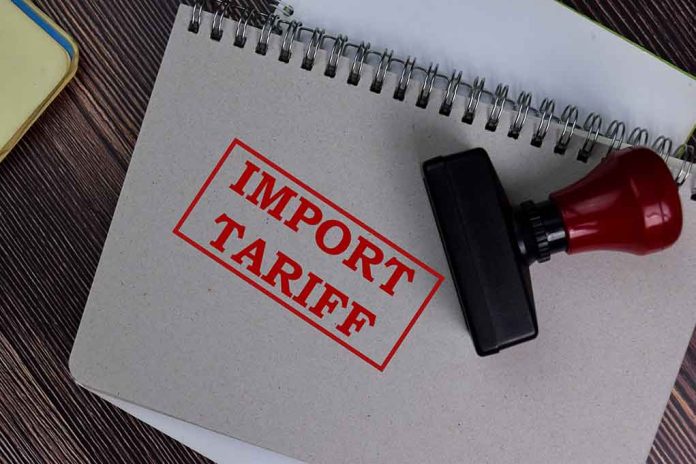
The proposed tariffs by the Trump administration stand to significantly impact the U.S. PC market, threatening price hikes and market growth projections in 2025.
At a Glance
- Proposed tariffs could increase U.S. PC prices by 46% by 2025.
- Market growth projections face disruptions despite a 2% annual increase.
- Tariffs on Chinese goods may strengthen China’s global foothold.
- Economic concerns arise from potential spending cuts and retaliatory tariffs.
Tariff Impacts and Market Pressures
The Trump administration’s planned tariffs, targeting imports from countries like China, Canada, and Mexico, could see U.S. PC prices soar by up to 46%. This increase could stifle projected market growth initially fuelled by new Windows upgrades and AI-enhanced PCs. Economists warn the potential impact on consumer electronics is substantial, as laptops, tablets, and smartphones could also see steep price hikes.
According to experts, electronics and apparel are expected to witness significant price escalations due to the tariffs, with an estimated annual additional cost of $2,600 for the average U.S. household. Over 90% of consumer electronics in the U.S. are imported, making them particularly susceptible to these new trade policies.
Trump has proposed a tariff of up to 20% on imported goods from most nations and a 60% tariff on items from China. An August analysis from the Peterson Institute for International Economics found that, depending on how the policy was applied, Trump's tariffs could cost… pic.twitter.com/ayN4T2rRqv
— Money (@Money) November 5, 2024
Projected Market Growth and Potential Disruptions
Canalys forecasts a modest 2% growth in PC shipments for 2025 and 2026. Despite a 9% increase in laptop purchases in Q3 2024, market momentum could wane due to these tariffs. With Windows 10’s phase-out, the surge in hardware purchases could stall if AI-PC prices remain uncertain. Federal spending cuts could also curtail future technology expenditures, potentially weakening market resilience.
Rob Handfield, a professor of operations and supply-chain management at North Carolina State University, told ABC News, “This will directly impact people’s pocketbooks.”
Some industry insiders are considering stockpiling inventories in early 2025 to combat price inflation, but this is a short-term remedy at best. A balanced strategy is suggested for enhancing U.S. competitiveness to maintain market integrity and growth.
Broader Economic Implications
The proposed tariffs offer a simplistic solution to complex international trade issues, potentially complicating partnerships and supply chain resilience. Retaliatory measures from global allies might harm U.S. exports and jobs, further isolating the nation economically. The potential 60% tariff on Chinese goods might unexpectedly bolster China’s influence on the global stage.
“Electronics are basically ubiquitous,” a professor of trade and public policy at Texas A&M University, Raymond Robertson, told ABC News. “I don’t know how this wouldn’t be incredibly disruptive.”
Efforts to increase federal revenue through these tariffs do not directly support U.S. manufacturing competitiveness or benefit workers. For enduring economic success, a targeted approach aligning tariffs with a broader strategic plan is crucial.
Sources:
- https://www.americanprogress.org/article/trumps-tariffs-would-raise-prices-harm-u-s-workers-and-make-it-harder-to-solve-global-problems/
- https://www.reuters.com/world/us/stocks-cheered-trumps-victory-tariffs-bring-unknowns-2025-2024-12-11/
- https://abcnews.go.com/Business/trumps-proposed-tariffs-raise-prices-products-experts/story?id=115893557
- https://www.theregister.com/2025/01/02/trump_tariff_pc_prices/




















